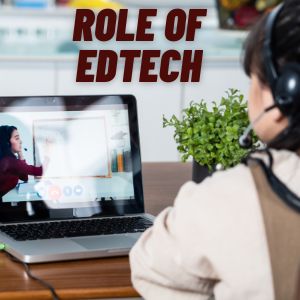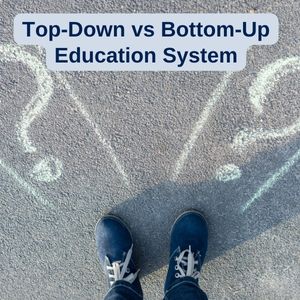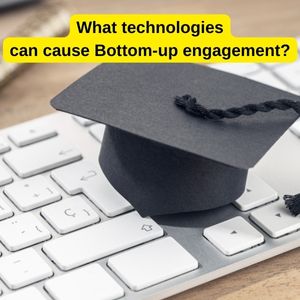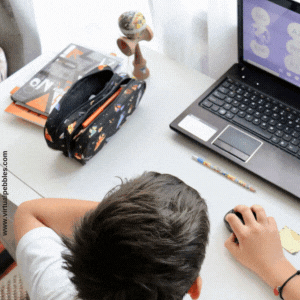K12 Technology Adoption at scale: Challenges and Roadmap
Many senior educational administrators are disappointed with technology's adoption in the education sector. The common refrain is that EdTech should have 'Ed' before 'Tech' and 'Tech' should not overshadow 'Ed' as is happening right now.
The educational industry is currently heavily digitalised, and schools must ensure that this change is inclusive. Such results would go a long way toward ensuring the sustained growth of the digital economy and its ability to improve numerous people's lives by teaching digital skills. In the K12 educational system, I think online learning will become more and more significant. The global economy is seeing more considerable developments, including the education sector's digitalisation. Online and offline options are no longer mutually exclusive; as the digital world permeates more and more aspects of our everyday lives, schools must make a determined effort to guarantee that all students receive the digital education and training necessary to succeed in the modern digital world.
Role of EdTech:

What is the role of EdTech – a minimal subset of education (knowledge, skills, values and experiences)? Where has EdTech been successful at scale?
(A) Test Preparation - A large bank of Multiple-Choice questions – from many years – with ready answers and explanations.
(B) The other area is the large number of high-quality self-help videos – which help the interested users quickly understand and learn at their pace with good visual support.
(C) Self-paced courses from Coursera, edX etc.
However, despite their success – there is a problem. Such methods suit self-driven students – a small minority (less than 3%). This approach does not focus on making students self-driven. Development of self-esteem, motivation, cooperation, leadership, and learnability is expected in classrooms by teachers and parents at home.
Technology gives teachers, and students access many learning materials that encourage innovation, critical thinking, cooperation, and communication.
- It encourages diversity and the advancement of digital literacy abilities.
- It broadens education beyond the confines of the classroom and the book.
- Ultimately, it introduces instructors and students to new online international communities. This encourages global awareness, which is crucial for schooling in the twenty-first century.
Top-Down vs Bottum-Up Education System:

Schools are the first to adopt changes and foster innovation because they must prepare citizens with the necessary abilities to act in our changing world. Schools have long served as sources of essential information. But given how quickly things are changing now, it is up to schools to raise a generation that is able to adapt and thrive in this new environment.
The education system is 'Top Down' and does not focus on making students self-driven. Not just the students – teachers are directed towards syllabus completion.
Any system which is aimed to support over 250 million students (K12 in India) – this 'Top Down' approach and standardisation is understandable. How do we understand progress at a country, state, district, or city level? What about making school and college admissions appear objective?
But education is about 'Opening the mind' to new thoughts and possibilities – and not only about objective compliance. In a rush for objectivity, the subjectivity of context is lost – and also, there is a rush to beat the system.
We need a system that is 'Bottom up '. Through independent investigation or experimenting, the student in this method begins with a topic or a query and eventually comes to an explicit understanding. This strategy's central tenet is that students employ inductive reasoning gleaned from observation to reach a deeper level of comprehension. This method is praised for its advantages since it teaches students how to seek out information independently, even outside the classroom. Bottom-up approaches are engagement driven. Teachers and students should be self-driven to use these systems at scale – like WhatsApp, YouTube, Facebook etc. Bottom-up systems embrace subjectivity and should co-exist with the 'Top down' objectivity requirements. Can this restore pride in the teaching profession? Can it help the joy of the Teaching Learning process? Can this be at scale? Can EdTech help?
What technologies can cause Bottom-up engagement?

Helping conversations, likes and acknowledgement, gamification and recognition – are some of the tools used by Social media to build engagement and large-scale communities. These can help to build self-esteem, exposure and recognition for teachers and students. Few studies characterised student engagement, and less than half of them used a theoretical framework. Undergraduate students were the primary target audience for the courses under evaluation, and blended learning and text-based technologies (such as discussion boards) were often employed. Behavioural engagement, which resulted from the use of instructional technology, was by far the most frequently identified dimension, followed by practical and cognitive involvement.
This approach can address another problem of IT adoption in the education system. Most content-based edTech systems – find great difficulty in getting usage and adoption. This is the case with some extensive offerings like Diksha and Byju. Coursera etc., where repeat usage is shallow, and dropouts are significant. Creating Bottom-up engagement with teachers helps to build adoption.
tickLinks provides tools for teacher support, teacher engagement and teacher recognition - to create bottom-up teacher engagement and large-scale support adoption of technology in schools. Further administrators are provided means for quick polls and data collection to guide the rollout of large-scale programs across thousands of schools.
Acharya Vinoba Bhave Sikshak Shayak Karyaram was started by Pune Zilla Parishad to encourage, support, and engage teachers. The district government schools' teachers all utilise the Vinoba app and programme. The tickLinks tools and programmes are the foundation of the Vinoba app.
Ajit Pawar, deputy chief minister, introduced the Shaala Sudhar programme on May 6 to improve the quality of Pune city's schools. In conjunction with the Shaala Sudhar initiative, the Vinoba app was also released. CEOs Ayush Prasad and Shobha Khandare of the Pune Zilla Parishad.

